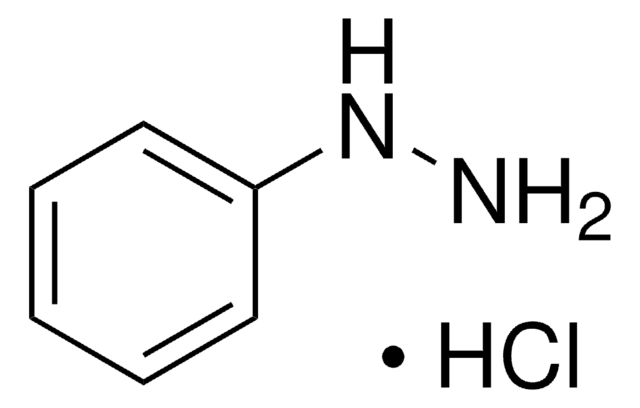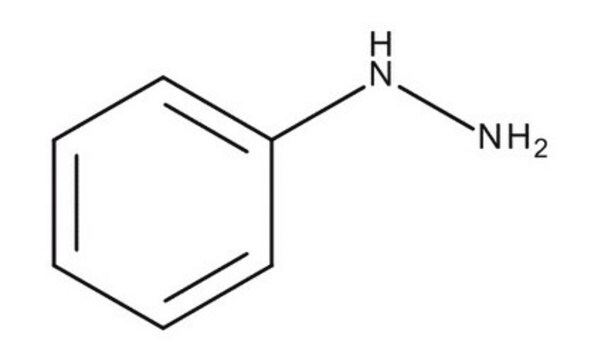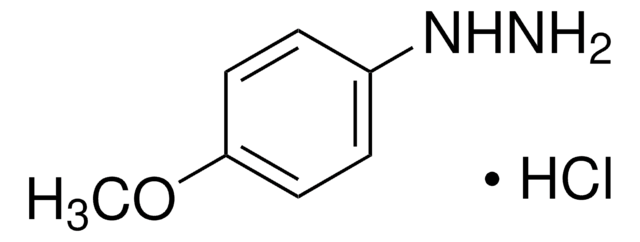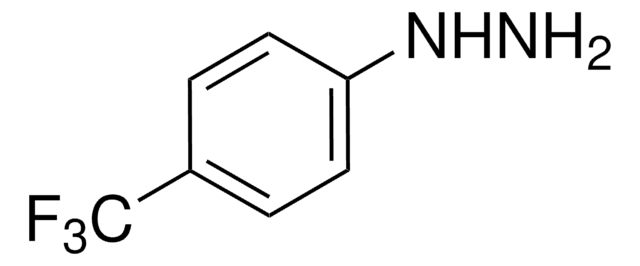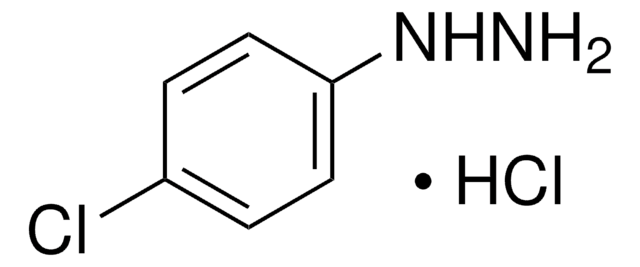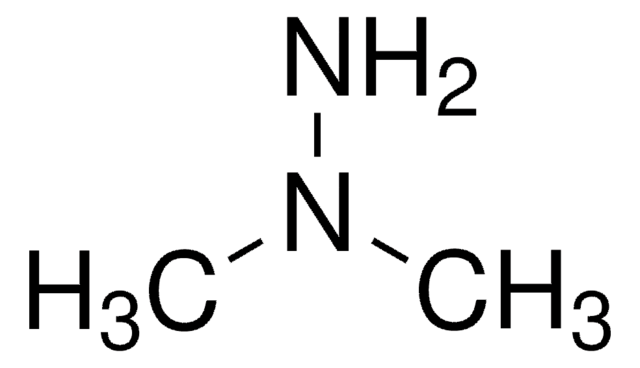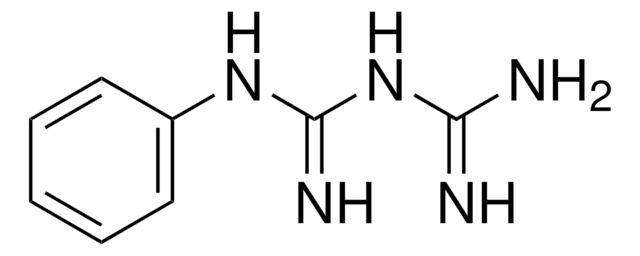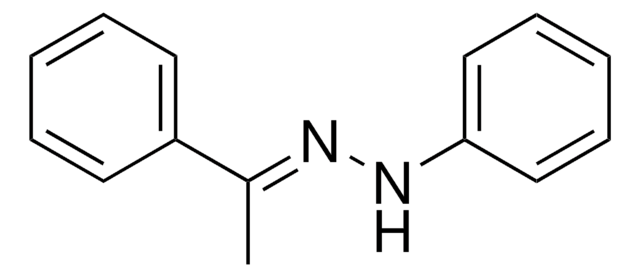P26252
Phenylhydrazine
97%
Sinónimos:
Hydrazinobenzene, Monophenylhydrazine
About This Item
Productos recomendados
vapor density
4.3 (vs air)
Quality Level
vapor pressure
<0.1 mmHg ( 20 °C)
assay
97%
autoignition temp.
345 °F
refractive index
n20/D 1.607 (lit.)
bp
238-241 °C (lit.)
mp
18-21 °C (lit.)
density
1.098 g/mL at 25 °C (lit.)
SMILES string
NNc1ccccc1
InChI
1S/C6H8N2/c7-8-6-4-2-1-3-5-6/h1-5,8H,7H2
InChI key
HKOOXMFOFWEVGF-UHFFFAOYSA-N
¿Está buscando productos similares? Visita Guía de comparación de productos
Categorías relacionadas
Application
- 4, 4′-(arylmethylene)-bis(3-methyl-1-phenyl-1H-pyrazol-5-ol)s by reacting with aryl aldehydes and acetoacetates in presence of N-bromo sulfonamide as a catalyst via one-pot pseudo-five-component condensation.
- Thiazolidinones by treating with mercaptoacetic acid and aldehydes or ketones.
- 5-[3,3,3-trifluoro-2-(phenylhydrazono)propyl]-1-phenyl-1H-pyrazole-3-carboxylic acid by reacting with 6-(trifluoromethyl)comanic acid.
It can be also used as a precursor for the preparation of selective carboxymethylated products at N-1 and N-2 by reacting with dimethyl carbonate (DMC) in the presence of a Bronsted base and metal salts as a catalyst.
signalword
Danger
Hazard Classifications
Acute Tox. 3 Dermal - Acute Tox. 3 Inhalation - Acute Tox. 3 Oral - Aquatic Acute 1 - Carc. 1B - Eye Irrit. 2 - Muta. 2 - Skin Irrit. 2 - Skin Sens. 1 - STOT RE 1
Storage Class
6.1A - Combustible, acute toxic Cat. 1 and 2 / very toxic hazardous materials
wgk_germany
WGK 3
flash_point_f
192.2 °F - closed cup
flash_point_c
89 °C - closed cup
ppe
Eyeshields, Faceshields, Gloves, type ABEK (EN14387) respirator filter
Elija entre una de las versiones más recientes:
¿Ya tiene este producto?
Encuentre la documentación para los productos que ha comprado recientemente en la Biblioteca de documentos.
Los clientes también vieron
Artículos
Structural modifications of proteins are essential to living cells. When aberrantly regulated they are often the basis of disease. Glycans are responsible for much of the structural variation in biologic systems, and their representation on cell surfaces is commonly called the “glycome.”
Nuestro equipo de científicos tiene experiencia en todas las áreas de investigación: Ciencias de la vida, Ciencia de los materiales, Síntesis química, Cromatografía, Analítica y muchas otras.
Póngase en contacto con el Servicio técnico